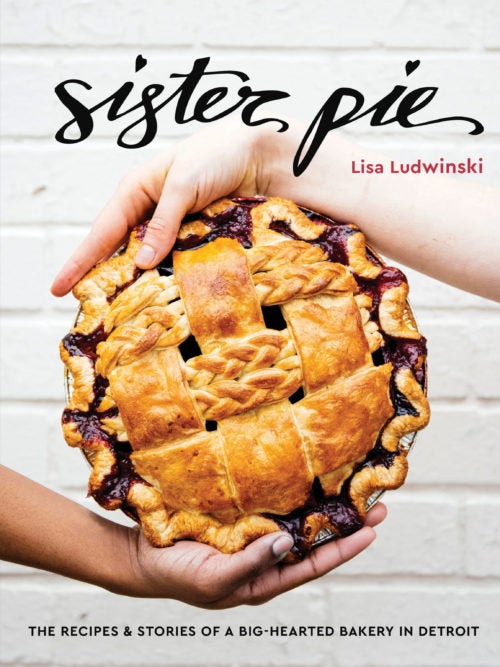Minted Pea and Potato Hand Pies
10
hand pies
Appetizer
Course
Print Recipe
Ingredients
Directions
All-Butter Hand Pie Dough
3 ¾ c
all-purpose flour

1 ½ tsp
granulated sugar

1 ½ tsp
kosher salt

1 ½ c
unsalted European-style butter, straight from the fridge

¾ c
ice cold water mixed with 1 1/2 tablespoons apple cider vinegar

Minted Pea and Potato Hand Pies
8 oz
red-skinned potatoes (skin on), scrubbed and chopped into 1/2-inch cubes

2 tbsp
olive oil

1 tsp
kosher salt, plus more as needed

1 ¼ tsp
freshly ground black pepper, plus more as needed

1 tbsp
unsalted butter

1 lg
yellow onion, diced

2
cloves garlic, minced

2
scallions, white and green parts, rinsed clean and sliced

1 tsp
packed grated lemon zest

1 ½ c
fresh shelled peas (frozen works, too)

⅓ c
minced fresh mint leaves

½ c
sour cream or thick plain yogurt

All-Butter Hand Pie Dough, rolled into 20 (4-inch) rounds, on a parchment-lined baking sheet, wrapped in plastic wrap, and refrigerated

1 lg
egg, beaten

½ tsp
flaky sea salt

It’s like a coming-of-vegetable-age story when you try fresh peas for the first time. A food I was sure I hated from the can turned into something I’m dying to see at the market. These hand pies are a celebration of peas, with fresh mint and lemon to provide brightness and roasted, mashed potatoes to bring it all together (literally and figuratively). Dip them in extra sour cream for a real treat.
Directions
All-Butter Hand Pie Dough
- In a large stainless steel bowl, combine the flour, sugar, and salt and stir to mix well. Place the sticks of butter in the bowl and coat on all sides with the flour mixture. Using a bench scraper, cut the butter into 1⁄2-inch cubes. Work quickly to separate the cubes with your hands until they are all lightly coated in flour. Grab that bench scraper once again and cut each cube in half. I always tell my pie dough students that it’s unnecessary to actually cut each cube perfectly in half, but it’s a good idea to break up the butter enough so that you can be super-efficient when it’s pastry blender time.
- It’s pastry blender time! Switch to the pastry blender and begin to cut in the butter with one hand while turning the bowl with the other. It’s important not to aim for the same spot at the bottom of the bowl with each stroke of the pastry blender, but to actually slice through butter every time to maximize efficiency. When the pastry blender clogs up, carefully clean it out with your fingers (watch out, it bites!) or a butter knife and use your hands to toss the ingredients a bit. Continue to blend and turn until the largest pieces are the size and shape of peas and the rest of the mixture feels and looks freakishly similar to canned Parmesan cheese.
- At this point, add the water-vinegar mixture all at once, and switch back to the bench scraper. Scrape as much of the mixture as you can from one side of the bowl to the other, until you can’t see visible pools of liquid anymore. Now it’s hand time. Scoop up as much of the mixture as you can, and use the tips of your fingers (and a whole lot of pressure) to press it back down onto the rest of the ingredients. Rotate the bowl a quarter-turn and repeat. Scoop, press, and turn. With each fold, your intention is to be quickly forming the mixture into one cohesive mass. Remember to incorporate any dry, floury bits that have congregated at the bottom of the bowl, and once those are completely gone and the dough is formed, it’s time to stop.
- Remove the dough from the bowl, place it on a lightly floured counter, and use your bench scraper to divide it into two equal pieces. Gently pat each into a 1-inch-thick square, working quickly to seal any broken edges before wrapping them tightly in a double layer of plastic wrap. Refrigerate the dough for at least 2 hours or, ideally, overnight. When you go to roll out the crust, you want the squares to feel as hard and cold as the butter did when you removed it from the fridge to make the dough. This will make the roll-out way easier.
- You can keep the hand pie dough in the fridge for a few days or in the freezer for up to 1 year. If frozen, remove the dough and place it in the refrigerator to thaw one full day before you intend to use it.
Minted Pea and Potato Hand Pies
- Make the filling: Preheat your oven to 400°F. Place the potatoes on a baking sheet and toss evenly with 1 tablespoon of the olive oil, 1⁄2 teaspoon of the salt, and 1 teaspoon of the pepper. Transfer the baking sheet to the oven and roast for 40 to 50 minutes, until the potatoes are fork-tender and beginning to look crispy. Set the baking sheet on a wire rack to cool. You can roast the potatoes up to 2 days in advance and store in an airtight container in the refrigerator.
- In a large sauté pan over medium heat, melt the butter and remaining 1 tablespoon olive oil. Add the onion and cook, stirring occasionally, until translucent. Add the garlic, scallions, and lemon zest and cook for 1 minute longer. Season with the remaining 1⁄2 teaspoon salt and 1⁄4 teaspoon pepper. Add the peas all at once, and stir to mix. Cook for 5 minutes, until the peas turn very bright green. Add the mint and cook for 1 more minute. You can cook the peas up to 2 days in advance and store in an airtight container in the refrigerator.
- In a large bowl, combine the potatoes, pea mixture, and sour cream. Use your hands or a wooden spoon to mix together—we like to smash the potatoes so they become the binder. Season to taste with more salt and pepper. Cover with plastic wrap and transfer to the refrigerator to cool. You can make the filling up to 2 days in advance and store in an airtight container in the refrigerator until you’re ready to assemble the hand pies.
- Preheat the oven to 450°F. Line two baking sheets with parchment paper.
- Remove the rolled-out pie crust rounds from the refrigerator and lay half of them out onto a lightly floured surface. Brush each round entirely with the beaten egg. Spoon 2 to 3 tablespoons of the pea filling onto the center of each round. Place the remaining pie crust rounds on top of each pile of filling. Place your fingers under either side of a hand pie while resting your thumbs on the top. Use your thumbs to press the edges of the bottom round up to meet the top round and pinch them together tightly until the hand pie is sealed, rotating the pie as you go. Flip the hand pie over and use the tines of a fork (dipped in flour) to seal it again around the edge of the entire round, making a decorative edge. Take a 4-inch cutter and cut the hand pie once more to clean and define the edges. Repeat with the remaining hand pies. If you want to freeze the hand pies to bake later, do that now: transfer them to a baking sheet and place in the freezer. When frozen, place in a freezer storage bag and freeze for up to 3 months. Transfer from the freezer directly to the oven to bake.
- Divide the hand pies between the parchment-lined baking sheets, placing them at least 1⁄2 inch apart. Use a paring knife to cut a tiny slit in the top of each hand pie, then brush the tops and edges with the remaining beaten egg. Sprinkle the sea salt evenly on the tops. Transfer the baking sheets to the oven and bake for 25 to 35 minutes, until the hand pies are deeply golden brown. Place on a rack to cool at least 10 minutes before eating.
- Store leftover hand pies, in an airtight container or wrapped tightly in plastic wrap or foil, in the refrigerator for up to 2 days.
Reprinted with permission from Sister Pie by Lisa Ludwinski, copyright © 2018. Published by Ten Speed Press, an imprint of Penguin Random House. Photography credit E. E. Berger © 2018

